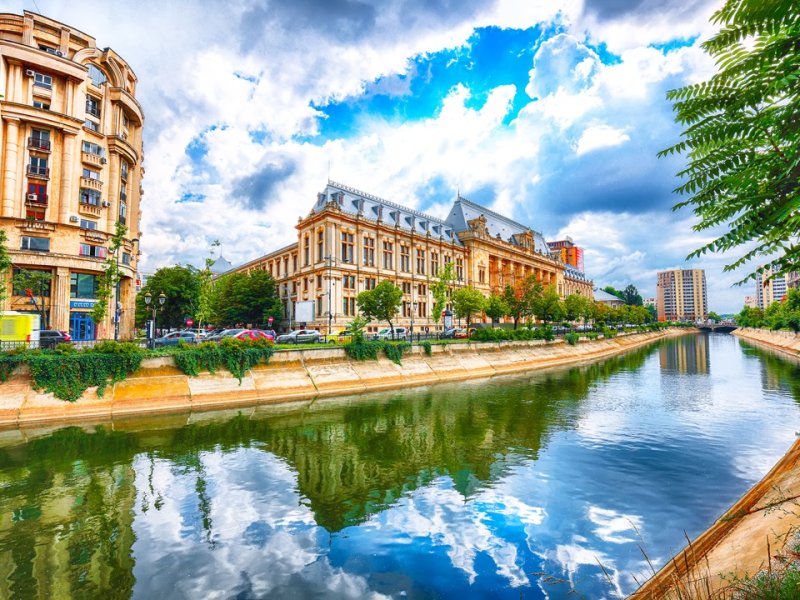Bucharest and its waters: the rivers and lakes that shaped the city

By Bucharest Team
- Articles
Bucharest has never been only a city of dust and concrete. Behind its image of traffic and asphalt, the capital is crossed and defined by water. Two rivers – Dâmbovița and Colentina – and more than ten major lakes, natural or man-made, have influenced its urban development, its economy, and its cultural identity.
Dâmbovița – the river tamed by the city
The city’s main river, Dâmbovița, was for centuries both a lifeline and a curse. It powered mills and supplied drinking water, but it was also a constant source of disease because of pollution and waste. From 1880 onward, major canalization works began under engineer Grigore Cerchez. In the 1970s and 1980s, the river was completely rectified and encased in concrete banks, while in 1986 Lacul Morii was inaugurated – the largest lake in the capital, designed as a reservoir and flood-control barrier.
Colentina and the chain of lakes – a watery necklace in the north
The second major river, Colentina, runs through the northern and north-eastern part of the city. Along its course, successive dams created what is known as the “chain of lakes,” stretching from west to east:
- Lacul Străulești
- Lacul Grivița
- Lacul Băneasa
- Lacul Herăstrău (King Mihai I) – developed between 1933–1936, the largest inner-city lake
- Lacul Floreasca
- Lacul Tei
- Lacul Plumbuita
- Lacul Colentina
- Lacul Fundeni
- Lacul Pantelimon I and Pantelimon II
Expanded during the interwar period and systematized under communism, this chain still serves both recreational and ecological purposes, providing habitats for migratory birds and helping regulate the city’s microclimate.
Other emblematic lakes of the capital
Beyond the Colentina chain and Lacul Morii, several other lakes give Bucharest a distinctive character:
- Lacul Tineretului, created in the 1960s together with the park of the same name.
- Lacul Carol (Libertății), small but historically tied to exhibitions and the creation of Carol Park.
- Lacul Circului (Tonola), unique in Europe for its pink lotus flowers (Nelumbo nucifera).
- Lacul Văcărești, left behind after an abandoned hydrotechnical project in the 1980s, later turned into a nature reserve known as the “Văcărești Delta.”
The invisible waters
Beyond the visible rivers and lakes, Bucharest once had many streams and springs, now either disappeared or redirected into the sewer network. In the 19th century, public fountains and wells fed by these sources were part of daily life. Today, only a few remnants recall the underground water system that sustained the city.
A city between waters
The rivers and lakes of Bucharest tell the story of a complex relationship between nature and urban growth. Once vital sources of water and food, they have become mainly landscape and backdrop – sometimes protected, sometimes sacrificed to construction. Yet without them, the capital would be a far drier city, in every sense of the word.






























